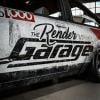a bit of info i pinched
to help out some people that havent raced
What is DYO E.T. Racing and How does it work?
By far the most popular form of drag racing is a handicapped form of competition known as "E.T. Bracket Racing." In this form of racing, two vehicles of varying performance potentials can race on a potentially even basis. The anticipated elapsed times for each vehicle are compared, with the slower car receiving a headstart equal to the difference of the two. With this system, virtually any two vehicles can be pared in a competitive drag race.
The great thing is YOU get to select your handicap.
How does the handicap system work ?
The Dial-In value (the handicap value) you need to nominate is the minimum amount of time you think your car will take to travel over the quarter mile distance. You determine this value by doing practice runs down the drag strip and seeing the results you get in elapsed time (ET), which is the time it takes you to travel the distance. To determine your final Dial-In to nominate, you may need to add some safety margin to the ETs you have accomplished, as your ETs may improve as the day progresses due to any number of causes including weather, your vehicle, your changing/improving driving style etc.
Each competitor selects their Dial-In before the race so when two cars line up to race each other, the required handicap between the two cars can be calculated by the event organisers. The organisers calculate the handicap by subtracting the Dial-In of the faster of the two cars from the Dial-In of the slower car. The resulting value is the head start the slower car will get before the faster car is allowed to start down the track.
An example of this is :
Car A has done practice run ETs of 15.65, 15.31 and 15.10 seconds so selects a Dial-In of 15.00 seconds
Car B has done practice run ETs of 13.45, 13.48 and 13.25 seconds so selects a Dial-In of 13.10 second
Car A Dial-In minus Car B Dial In = 15.00 - 13.10 = 1.90 seconds
Car A, being the slower car, will get to start 1.90 seconds before Car B.
The theory is that if both drivers react to the start lights in the same way (this is Reaction Time - discussed below) and both manage to produce ETs that are identical to their Dial-Ins then they should cross the finish line at the same time. The closer you can get your Dial-In to your actual ET the more chance you have of winning as your competitor will have less handicap advantage.
So why have the safety margin when selecting your Dial-In ? Going faster than your Dial-In is called Breaking Out. For instance, if Car A's ET was 14.90 on a 15.00 Dial-In, then Car A has "broken out" and automatically loses unless Car B also breaks out and by a larger amount.
"Staging" / "The Christmas Tree"
The 'Christmas Tree' is on the startline of the race track. It is a very important piece of equipment which controls the race. As a vehicle approaches the starting line it breaks the first light beam and the 'Pre-Stage' light on 'Christmas Tree' is lit. The driver slowly inches the car forward until the second light beam is broken and the 'Staged' lights come on. After both cars are staged the Starter activates the 'Christmas Tree' and three amber lights and one green are sequenced. Drivers use amber lights as a guide to anticipate the green bulb coming on. Leave too soon and a bright red "foul" shows. See Christmas Tree below.

"Reaction Time"
In both vehicles cover the quarter-mile in exactly the predetermined elapsed time (each "dial-in"), the win will go to the driver who reacts quickest to the starting signal. That reaction to the starting signal is called "reaction time." A perfect "reaction time" is .40 because that is the interval between each illumination of lights on the "Christmas Tree". Both lanes are timed independently of one another, and the clock does not start until the vehicle actually moves. Because of this, a vehicle may sometimes appear to have a mathematical advantage in comparative elapsed times but actually loses the race. This fact makes starting line reflexes extremely important in drag racing! And you thought it was simple right? Well, actually there's more� read on.
"Break-Out"
Should a driver go quicker than his/her predetermined "dial-in" it is a "break-out" which is grounds for disqualification (because the handicap provided to the other car was then incorrect � making it an unfair race for the competitor). In the case of both vehicles making their runs under their dial-ins, the win goes to the driver who breaks out the least.
"Red Light"
Another form of disqualification is a foul start (or "red light"). This happens when the driver reacts to the "Christmas Tree" too quickly and drives his car away from the starting line before the green "go" signal. When dual infractions occur, say a red-light and then a break-out, the re-light takes disqualification precedent over the break-out.
Edited by STEVO, 06 March 2008 - 03:17 PM.






 View Garage
View Garage









